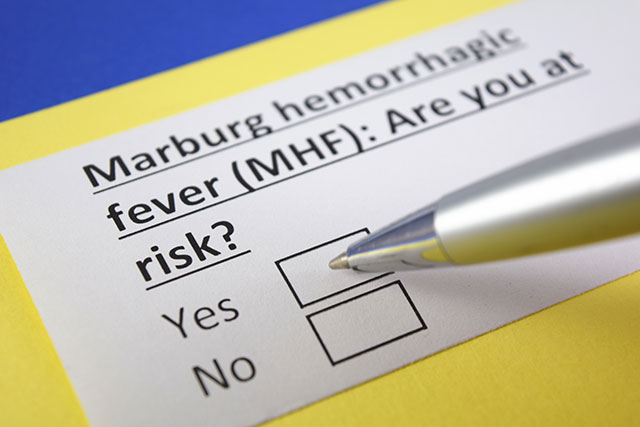
Its warning followed an outbreak of Marburg virus disease (MVD) in two African nations – Equatorial Guinea in West Africa and Tanzania in East Africa. The CDC responded by sending its National Center for Emerging and Zoonotic Infectious Diseases in both countries. It also urged travelers in the two countries to avoid contact with sick people and healthcare facilities in affected areas, and to watch for symptoms for three weeks after leaving.
According to the public health agency, MVD can spread through the "blood or body fluids of a person infected with or who has died from" the disease. Aside from these, the virus can also spread by means of contaminated objects or by contact with animals such as bats.
Clinical diagnosis of MVD can be difficult, especially if only one case is involved. This is because many of the symptoms of MVD are similar to those found in other diseases such as malaria, typhoid fever, Lassa fever or Ebola.
The World Health Organization (WHO) confirmed an MVD outbreak in Tanzania, with eight official cases and five fatalities. It also confirmed a similar situation in Equatorial Guinea with nine official cases of MVD and an additional 20 probable cases, all of whom have died.
According to the global health body, three of the affected provinces in Equatorial Guinea – Kie-Ntem, Litoral and Centre Sur – "have international borders with Cameroon and Gabon." The WHO continued: "Cross-border population movements are frequent, and the borders are very porous. Although no MVD cases have been reported outside Equatorial Guinea the risk of international spread cannot be ruled out."
Another vaccine in the works for the plandemic
"Although no vaccines or antiviral treatments are approved to treat the virus, supportive care [through] re-hydration with oral or intravenous fluids and treatments of specific symptoms improve survival," the WHO remarked. "A range of potential treatments are being evaluated – including blood products, immune therapies and drug therapies."
The National Institutes of Health (NIH) reported in January that human trials for an MVD vaccine appear "promising." However, one cannot help but be skeptical given that the NIH also played a part in the development of the Wuhan coronavirus (COVID-19) vaccine associated with a myriad of harms.
A press release from the NIH expounded on the MVD vaccine, which used a "modified chimpanzee adenovirus" and "a glycoprotein found on the surface of" the Marburg virus to induce an immune response. The injection was developed at the Vaccine Research Center of the National Institute of Allergy and Infectious Diseases (NIAID), under the NIH. Prior to his retirement in December 2022, infectious disease expert Dr. Anthony Fauci served as NIAID director. (Related: Fauci Virus: Shocking new evidence proves covid-19 began with Dr. Anthony Fauci and NIAID.)
The NIH press release claimed that "there were no serious adverse events" during the vaccine trial and "the experimental vaccine was well-tolerated." It also claimed that the MVD vaccine "appeared to induce strong, long-lasting immunity" – with 95 percent of trial participants exhibiting a robust antibody response after vaccination and 70 percent maintaining that robust response beyond 48 weeks.
"The vaccine developed by researchers at the NIAID … could someday be an important tool to respond to Marburg virus outbreaks," the press release stated. However, a report from En-Volve begged to differ: "If this becomes a widespread problem, it's going to be hard to imagine it's not another scamdemic."
Visit Outbreak.news for more stories about the Marburg virus and MVD.
Watch attorney Todd Callender warns Maria Zeee that Marburg is the next "plandemic" below.
This video is from the ?????? ?????????? channel on Brighteon.com.
More related stories:
Marburg virus kills 5 in Tanzania; over 100 feared to be infected.
Sources include:
Please contact us for more information.






















